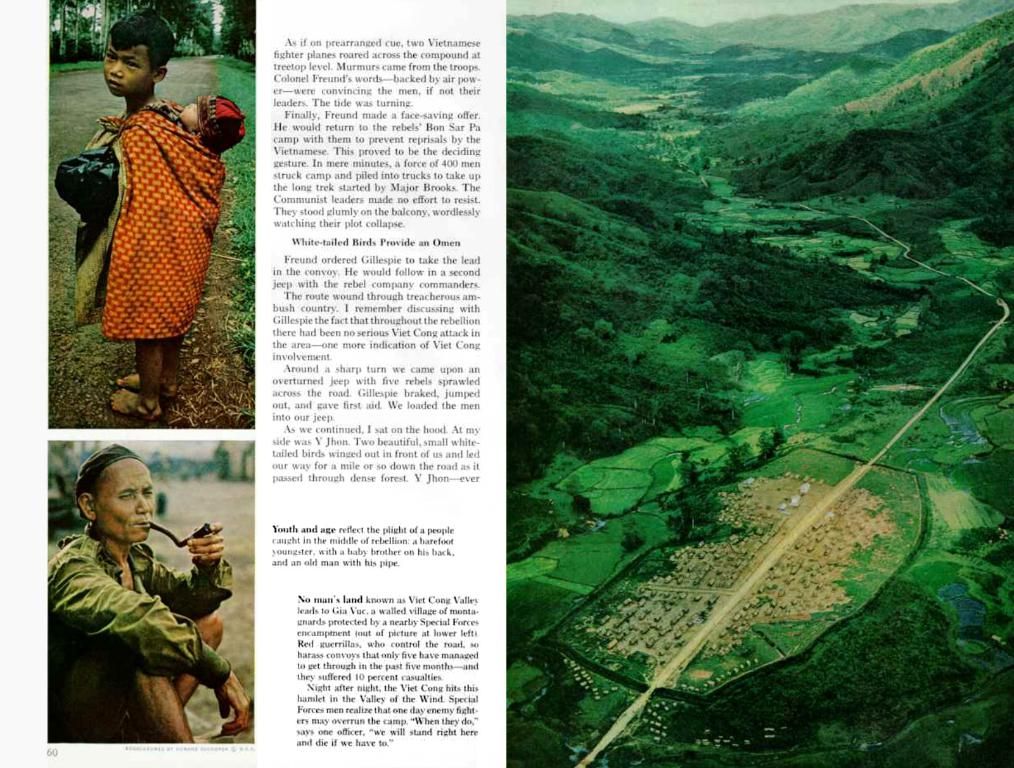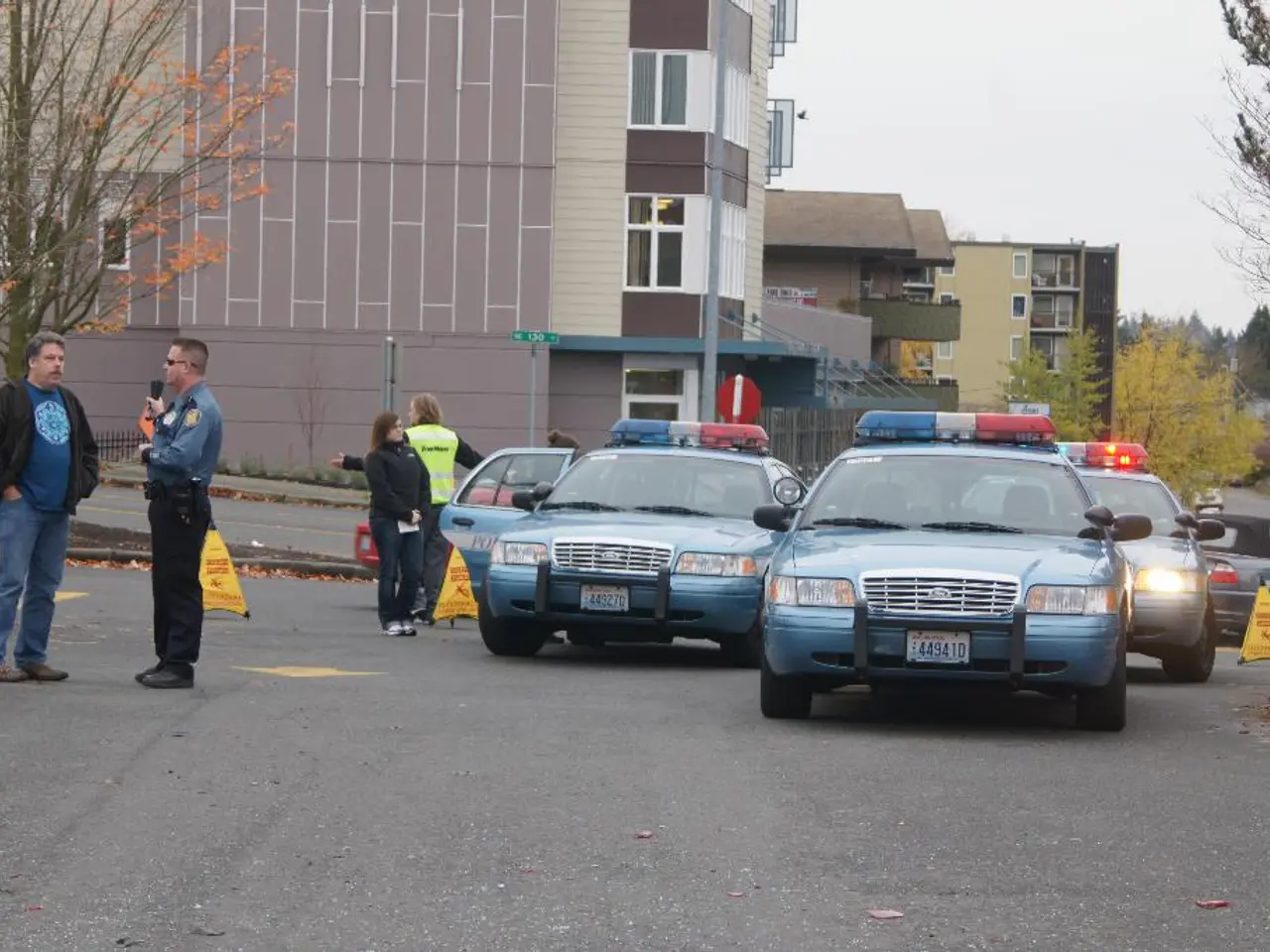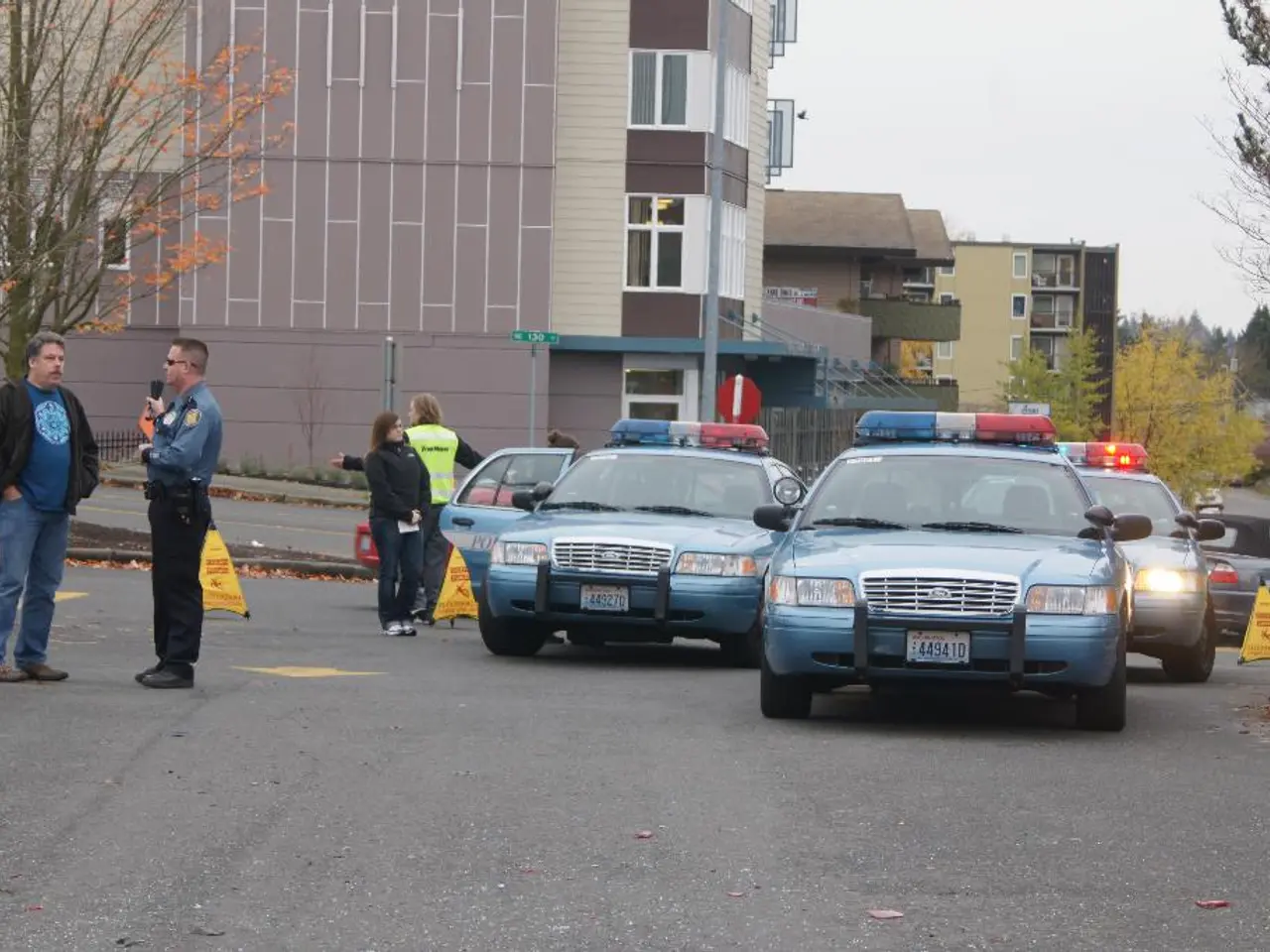Navigating a Rainstorm Campout: Tips for Safety and Fun in a Stormy Outdoor Experience
Brace for an incredible adventure as you embark on camping smack dab in the middle of a mother nature's thunderous wonderland! It's a tantalizing blend of adrenaline and excitement that makes for unforgettable memories for the daring few who dare to venture into nature's unbridled fury. But remember, this isn't a walk in the park – there are real risks out there. I'll take you through the nitty-gritty of camping during thunderstorms, helping you stay safe and enjoy the show.
First things first, let's understand the nitty-gritty of thunderstorm warnings and alerts. A thunderstorm watch means it's possible - but not a certainty - that thunderstorms will roll through your area. Keep your eyes peeled and your ears open. In contrast, a thunderstorm warning means the storm is upon you, requiring swift action. An advisory, on the other hand, lets you know that the nor'easter isn't severe but still poses a potent danger. For the greater good, get the lowdown on weather forecasts, particularly how to interpret probabilities. How's that for some layman's meteorology?
Next, let's talk essential gear. You'll need a sturdy waterproof tent, preferably with sealed seams and a rainfly, and tarps for added protection. Embrace the layering system for weatherproof clothing and gear – think breathable, moisture-wicking base layers, insulating mid-layers, and a windproof and waterproof outer shell. Of course, don't forget your waterproof boots and gloves, a weather radio, and waterproof storage solutions for your essentials.
The location of your campsite is of the utmost importance. Skip the high ground, open fields, and tall trees – they're lightning magnets. Instead, head for lower-lying areas where the risk of lightning and strong winds is minimized. Keep your campsite at a safe distance from water sources and away from cliffs or steep inclines to reduce your chances of being caught in a flash flood or avalanche.
Pitching a tent in rainy weather requires a strategic approach. Find a suitable site first, where rain won't accumulate and strong winds won't toss your tent around like a beach ball on a windy day. Assemble the tent as quickly as possible, lay out a ground tarp, and securely attach the rainfly to keep the interior dry. Tighten your tent's guy lines to minimize flapping, and add natural barriers like fallen branches for extra protection from the elements.
During the storm, follow safety measures to the letter. Adopt the lightning crouch position, and maintain a safe distance from metal objects, isolated tall objects, and any conductive materials. Don't camp near water sources, and continually monitor the storm's progress. After the rain stops, assess the damage and clean up any wet gear to prevent mildew growth and extend the lifespan of your equipment.
When the storm sulks off, don't fret. Embrace the opportunity to tell ghost stories by the campfire or organize team-building games to lift everyone's spirits. Capture dramatic photographs of the storm's aftermath, and take solace in the fact that a little rain never hurt anyone. So go ahead and embrace the thrill of camping in a thunderstorm – it's not just an adventure, it's a rite of passage for the braves and the bold!
On a science blog, one can find valuable information about the difference between a thunderstorm watch, warning, and advisory, helping to understand weather forecasts better. For an safe camping trip during thunderstorms, it's essential to choose a lower-lying campsite away from open fields, tall trees, water sources, cliffs, or steep inclines. A board game night under the stars can be a great way to boost team-spirit after a thrilling thunderstorm.







